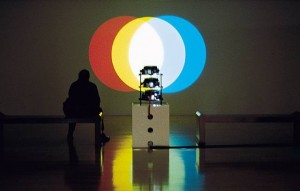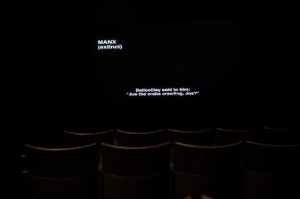Since I actually used the phrase ‘Way of the Guttershaman’ last time, I should say a bit more about what that entails.
The Way of the Guttershaman cannot be taught. But it can be learned.
God, that’s really fucking pretentious, isn’t it?
What I mean is, the Guttershaman approach is just that – an approach, a set of habits, a perspective for interacting with occult possibilities. A bricolage of weird shit. In short, a way of making your own toolkit for working magic using whatever fits.
The toolkit idea is one that’s important to me. I’ve written about it elsewhere, in my thoughts about what I call the Tribe of the Strange, that Outsider-fanboy-weirdo cohort that pops up every generation, and has to find it’s roots elsewhere than the mainstream of its birthplace society. The Guttershaman approach can be seen as a toolkit for the magic-using wing of the Tribe.
So, assuming you want to… how do you make a Guttershaman toolkit?
You start with metaphors.
The definition of magic I came up with in an earlier Guttershaman piece goes like this:
Magic is the means by which some observers can use and manipulate the patterns they observe to change the world.
This means you’ve got to look closely at how your personal patterns interact with the phenomenal world. It also means the more (and wider) varieties of patterns you’re familiar with, the more scope your explorations will have. More symbol-sets, more metaphors. Better, more complex tools – ranging from metaphorical mallets to jeweller’s screwdrivers. And, always, a good reliable multi-tool for use in a pinch.
Your multi-tool, to push the metaphor, is having a solid yet flexible set of symbols which relate well to each other and pack together neatly. This means that somewhere along the line, you’ll have to study one occult system or symbol-set in depth. In my case, it was the combination of Western Alchemy and its Sufi parallels/influences – but as long as it’s a system with a lot of built-in flexibility, and one that you can relate to on a deep emotional level, it doesn’t really matter which one it is (though of course which one you work with will strongly influence all your other tools). It is vital, however, that you ingrain it deeply. In order to gain a working knowledge of what other bits and pieces will work for you, you have to have something to compare them to – this system provides your baseline.
(Hate to resort to yet another hoary cliché, but it’s kind of like jazz – before you can successfully improvise, you have to be able to play the bloody tune properly.)
And of course having an actual multi-tool is a damn good idea too – along with it’s communications equivalent, a smartphone. (More on physical tools and props below.)
I’d also strongly recommend you learn a martial art – not a fancy dojo-only dance, but something you can actually use in a street fight. A -jutsu, rather than a -do, in Japanese terms. Nothing grounds you quite so well as knowing you can defend yourself, and specifically that you can use your body’s energies (Ch’i, Ki etc) and apply them directly. A spell, in the Guttershaman model, is simply ch’i with instructions encoded into it – so learn to push the ch’i hard and precisely. Also, knowledge of tactics and strategy has an awful lot of application in magic, especially at the pointy end.
(I only ever recommend one book on martial arts… because while you can’t learn martial arts from a book, you can learn strategy and tactics. That book is A Professional’s Guide To Ending Violence Quickly by Marc ‘Animal’ MacYoung. All the practical tactical and strategic advice you’ll hopefully ever need. Though a look at Sun Tzu & Musashi certainly won’t hurt.)
Most of your toolkit will be things that you use to get you in the mood for magic, to raise the ‘energy’ for you to use – sets of associations with particular emotional states, that you can draw upon at will. My love of movies and TV means that a whole bunch of mine come from those media. (For example, I’m especially fond of the use of tunes from soundtracks and scores as musical cues for particular head-states. Make the associations deep enough, and you don’t even need a MP3 player… humming or whistling a couple of bars will do the trick nicely.) Particular ‘ritual’ clothes and jewellery can have the same effect – a practice that’s been codified at least as far back as Crowley.
This brings me to the subject of props. The actual physical tools of your toolkit.
They should generally be the best quality you can afford, though preferably something that can be easily replaced – but, most importantly, they should be the most apt object for the purpose, not necessarily the most expensive or rare. Some of them you’ll want to make for yourself – other bits you’ll buy off the shelf, and maybe customise to your needs.
(Here’s a lovely example: magician Jason Miller based a magic wand around a shop-bought replica of Doctor Who’s Sonic Screwdriver… which he enhanced with an elemental ritual. Nice bit of work, that!)
But at the same time, you have to be able to improvise, to use whatever is to hand – relying on your bespoke kit is fuck all use if you don’t have it on you, or it gets lost, or the batteries run out. Your primary toolkit is the collection of symbol-sets your imagination associates with magic – and that improv skill should mean you can pick up any object with a rough-and-ready resemblance to what you need and treat it as the exact, perfect tool for the moment.
(There’s a handy mind-trick I like to use for that, taken from live-action roleplay. Often, an object in the physical world of the game is considerably less accurate-to-type than what it is imagined to be in the fantasy setting – say, a tennis ball in place of a Magic Missile. These lesser objects are called Phys-Reps – physical representations. Maintain a catalogue of the archetypal versions of your tools in your head – usually, they’ll be considerably better than any object you actually use anyway. For example, if you like using lightsabres in magic – and, honestly, who doesn’t? – even the most expensive replica will pale in comparison to the one in your imagination. Make and keep that detailed imagined version of every tool… and when needed, superimpose that pattern on whatever phys-rep you actually have. Bingo! Instant enchantment.)
The majority of the Guttershaman perspective is learning which symbols and metaphors work best for you. This doesn’t mean just settling for a few different sets and leaving it there – it’s about using whatever you learn and applying it to how you interact with The Weird. Every fiction, every news article or speculative science theory, every dumb meme and ancient myth, should be grist for your mill. There’s always room to learn more, to think differently, to upgrade your tools. But you should also strive to remember: Never mistake your toolkit for reality – and respect the toolkits, the paths and stories, of others. Learn from all other ways, share the best of your own.
The Shaman part of Guttershaman, for me, is always about taking those tools and using them to go into the Weird and come back with more tools, more ideas… to hopefully enrich the Tribe of the Strange – and especially, to protect it. Not everyone who works magic is a friend or ally. Not all practitioners share our views or have our needs. Some, frankly, are just spiteful vicious cunts. If you’re thinking the Guttershaman path makes sense to you, never forget that the primary duty of the Shaman is to defend their tribe from demons.
I’ve been looking here at how the Guttershaman’s mindset works – how to construct working mindsets and models inside your head. Next time, I’ll be looking at the stuff that’s outside your head, and how you deal with it.
The little things. Like, for example, gods.




